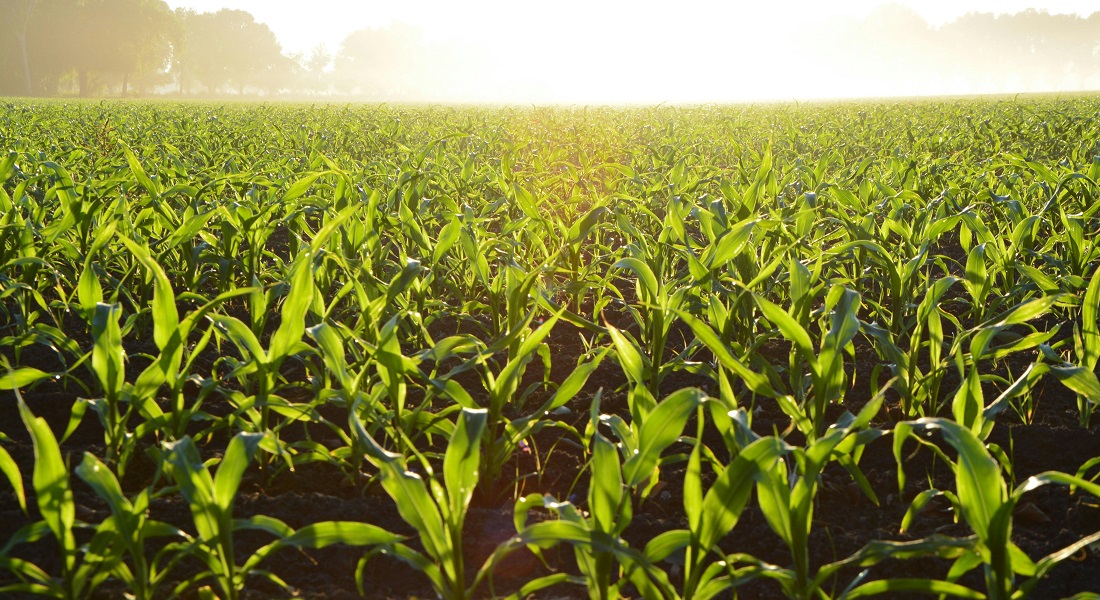Green food production needs more green measurements
The green transition of our diet requires a similar green transformation of our food production, which increasingly relies on measuring quality and efficiency across all stages of the production chain. The solution to the measurement problem is Near-Infrared Spectroscopy (NIRS), argues two researchers from the Department of Food Science in a new perspective article.

The phrase “from farm to fork” has become a fixture in discussions on the green transformation of our foods and their production. Sustainability must be incorporated (designed) into the entire food manufacturing process, from the raw materials to the finished food products. However, food production from farm to fork is highly complex, involving vastly different work methods from harvest to food manufacturing and distribution, all of which need to be monitored.
So how do we make continuous green choices with the highest possible gain? How do we scale this up? And can it be done in a way that is sustainable in itself?
Yes, it can, argue Professor Søren Balling Engelsen and Associate Professor Tomasz Pawel Czaja in a new perspective article, just published in Spectrochimica Acta. They propose that Near-Infrared Spectroscopy (NIRS) – a technology already used in agriculture, medicine, and the ingredient industry – could be the key to future sustainable food production.
“In all aspects of the green transition within the food sector, we need to start measuring more and more frequently. Here, NIRS is the ideal process analytical technology. It can provide an overview including the gross molecular composition of foods. The advantage of using process analytical technology is that you can save energy, water, and heat and optimize every aspect of a food product’s life cycle on a data-driven basis when everything is continuously measured,” explains Søren Balling Engelsen.
Real-Time Decisions in a Digitalized Food System
NIR is a technology that measures molecular vibrations with (near) infrared light. This means that NIR can simultaneously measure the protein, carbohydrate, or water content of a grain, a plant, on a production line, or in the finished food product. This can be done efficiently, quickly and continuously without using chemicals or excess energy.
“NIRS is simply a more efficient and green way to measure foods throughout all their processes compared to the classic food analytical methods. It requires no sample preparation, and there are no chemicals or extraction liquids involved, and it allows us to optimize the entire process of food manufacturing. In the current food system, large quantities of solvents are used for sample-based testing of foods. We could avoid much of this if we use NIRS more extensively,” says Søren Balling Engelsen.
However, he also emphasizes that NIRS has certain limitations compared to the traditional analytical methods. When measuring a raw material, food stream, or finished product with NIRS, it produces a complex and overlapping spectrum of all molecules present in the sample. This complex spectrum must then be decoded, for example, using advanced data analysis technology such as machine learning.
Therefore, traditional analytical methods that use large amounts of extraction liquids cannot be entirely eliminated. Instead, they are used to establish a precise baseline or calibration, from which NIRS can measure with high frequency and provide real-time data.
This is particularly relevant now because machine learning can be integrated to increase the precision of NIRS through multivariate calibration – where machine learning learns to separate the complex incoming NIR spectra, enabling better informed decision-making.
"We are using machine learning to decode this NIR spectrum, which might look superficial to the untrained eye, to allow us to make strategic decisions at every stage of food production in real time. A side benefit of this setup is that it provides a natural digitalization and through that also an optimization of the processes," says Søren Balling Engelsen.
A Long-Term Investment
While the arguments for integrating NIRS throughout the food production chain are substantial, it is harder to quantify its positive impact, acknowledges Søren Balling Engelsen. For this, we will need some life cycle analyses - calculating the environmental impact of a product or service in its entirety, from raw material extraction to disposal.
“We have to go back to the 1970s to find the first green analytical revolution in the food industry. At that time, farmers were paid based on the protein content in their grains, which was measured by Kjeldahl analysis, which determines a sample’s nitrogen content by dissolving it in sulfuric acid. Transitioning to NIRS instead of the Kjeldahl method was a significant improvement in analytical efficiency. The less-discussed aspect at the time – the sustainability of replacing sulfuric acid with a green and non-invasive (near) infrared measurement – now stands as a central argument. What we are seeing today is essentially an extension of that,” explains Søren Balling Engelsen.
Imagining NIRS to its fullest extent almost sounds like sci-fi. Imagine, for example, precision agriculture on a vineyard, where drones equipped with NIRS sensors fly around measuring everything from soil moisture and plant and grape conditions to sugar content and anthocyanin levels in the grapes, which can be used to determine the optimal harvest time.
Later in the process, it can likewise be used to monitor and optimize fermentation processes and the final wine product, says Søren Balling Engelsen, who also grows wine when he is not researching food chemistry.
"The whole point of working toward having all this real-time data through NIRS is fundamentally about making the best-informed decisions to make food production both greener and more efficient. With the insights that NIRS can provide us about the development of crops in the fields, the optimization of harvest time, and the processing of raw materials like milling, drying, mixing, extrusion, baking, etc., we can produce our food at the highest quality with the least amount of processing and energy consumption.”
Contact
Søren Balling Engelsen
Professor
se@food.ku.dk
Thomas Sten Pedersen
Communications Officer
thomas.pedersen@food.ku.dk
